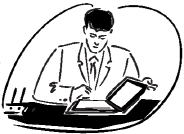|
Common Findings
In a Home Inspection Report
Fortunately,
most home inspections turn up a small variety
of problems, few of which
come as a surprise to the
buyer or the seller. After
all, the seller knows his
property, and the buyer has
attempted to get to know it
in order to make a
wise purchase.
|
Here are
some of the
most common findings
in a home inspection
report:
Grading/Drainage
Problems The problem
most commonly found by
inspectors, grading and drainage
problems often lead to damp or wet
basements. Correction methods can vary
and include installing new gutters, removing
weepy tiles, or regrading the lawn
to channel surface water in another direction.
Minor Maintenance Problems These
problems result from poor overall maintenance,
and include such things as peeling
paint and rotting wood in decks. Older/Insufficient
Electrical System
Common in older homes, older electrical systems
may include undersized services, aluminum
wiring, and knob-and-tub wiring.
Electrical problems are potentially hazardous,
so it is important to have
these findings fully researched by
a professional.
Older Cooling/Heating Systems If
a heating/cooling system is old or
poorly maintained, it could pose
|
a
safety and health risk. Although replacement
is expensive, newer systems
are cost-efficient as they reduce heating/cooling
costs substantially. 
Older/Poorly Installed Plumbing
Another common problem in older homes, ineffective
plumbing can run the gamut from
a simple 10-minute fix to expensive replacement.
If plumbing is a problem area,
it is wise to hire a professional for
evaluation. Minor
Structural Problems
Typical in older homes, these problems can include
everything from cracked plaster to a
shifting foundation. These are not immediate
hazards, but should receive the proper
attention.
continued on page 2
|
|
Page
2 |
|
Alban is proud to offer FREE Continuing
Education Courses in Real Estate Offices!Call Melissa For
Information and to Schedule at 301-404-8104 or 301-607-8114. | |
From the desk of . . .
Arthur S. Lazerow
Reduce Utility Bills
Everyone
desires lower housing expenses. Fortunately,
water, electricity, heat and air conditioning
usage are controllable and can
lead to lower utility costs. Here are some
easy steps to reduce costs:
1. At
the thermostat for a forced air furnace,
turn the fan to the "ON" position and
run the fan 24/7. The thermostat will remain
at a constant temperature longer and
call for gas or electricity less.
2. Check
the hot water temperature at the faucet
furthest from the water heater. If water
temperature is above 120 degrees, turn
the temperature control knob down to
achieve 120 degrees.
3. Turn
the water off while brushing your teeth.
A family of 4 can save 15,000 gallons
of water over a year. 4. Clean
the condenser coils on the refrigerator
to aid heat transfer and reduce
costs. Operate it at the proper temperatures,
36-38 degrees for the refrigerator
and 0-6 degrees for the freezer.
5. Eliminate
all wasted water. There should
be no dripping faucets, running toilets
or ghost flushing. All these waste water.
Take a quicker shower.
6. Replace
the showerhead with a water saver,
which cuts water use in half and reduces
the amount of water to be heated.
7. Inquiry
of your local utility company about
an energy audit. These can be low cost
or free and can be very educational.

|